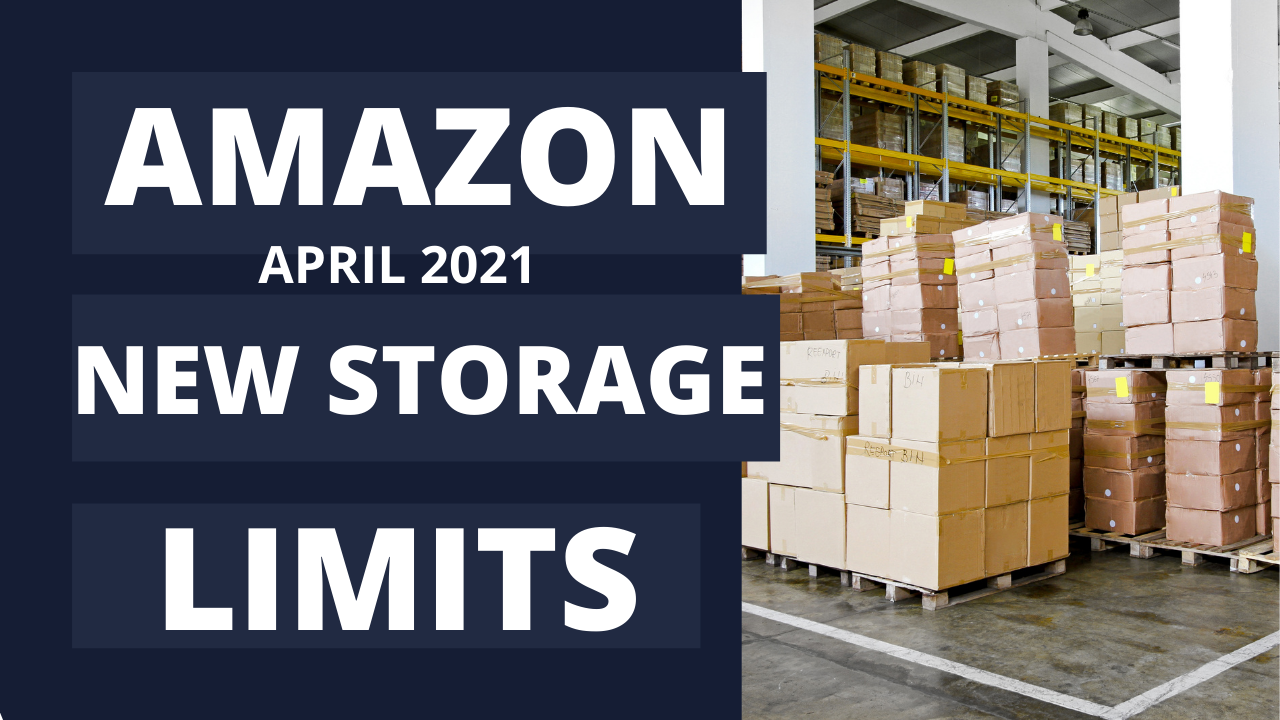Amazon FBA Inventory Limits Updates - 200 ASIN Limits Are Gone, But Restock Limits Still Present Challenges

Amazon FBA Inventory Changes and Updates
On April 22nd, Amazon Sent the following Email to FBA Sellers announcing some major changes to 'ASIN limits' and Account level storage limits.
Here was the Email from Amazon:
"In July 2020, we announced ASIN-level quantity limits for products that are stored in our fulfillment network. We made this change to ensure that we can receive and store products for all sellers who use FBA.
We’ve heard your feedback, and are continuously improving our policies and programs to better receive and store your products.
Effective April 22, 2021, all FBA products will no longer be subject to ASIN-level quantity limits. Instead, restock limits will be set at the storage-type level, offering you more flexibility in managing your shipments.
To review the restock limits and maximum shipment quantity, go to Inventory performance or Shipping Queue."
-Amazon
What Does This All Mean?
Now - your restock limits are at the account level now, not ASIN level, and they are by “storage type,” at the account level. In my accounts, the different storage types that I have limitations listed for are standard size storage, oversize storage, footwear, and apparel storage.
How can you see what your limitations are? First, go to your 'Shipping Queue' in seller central.
Then scroll ALL the way down to the bottom and you’ll see tiny tabs that are very easy to miss:
-"Restock Limits"
-"Storage Volume"
Click on the Restock limits, and it will expand and show you your limitations.
For a lot of You - You will probably see "Max allowed storage levels 1,000" - This is the max allowed you can ship in. If this is your first product, or new product you are planning on Launching: I wouldn't send in all 1,000. Instead, only send 300-500 units to start with and send the rest to a 3PL or your House.
Especially if you are a new Seller! This is to get started off on the right foot with Amazon's restock limits and your utilization rates (discussed below) which start to calculate as soon as you create first fba shipping plan and send in your inventory.
The Negative Implications of Amazon’s Changes
This inventory capacity also includes your inbound shipments. So Sellers doing higher sales volumes will now be completely cut off from launching new products.
What Are the Options for Amazon Sellers?
Sellers will have to send their next order from their factory to their own warehouse or a 3PL warehouse instead of creating a shipment going to Amazon. This will help your overall restock quantities, and account level storage limits, as you won't have those high open shipments.
By creating a shipment from a domestic warehouse, the transit time should only be about one week in most cases, as opposed to 1-2 months from China. Shipping from your own 3PL can be expensive, and you will have to pay per-month storage fees for storing extra products at their warehouse. However, this is about the only way to get around this new limits.
The warehouse will then possibly charge another fee to pick and ship it to Amazon, plus the fees for shipping pallets and supplies. (Even for domestic shipments from a 3PL to Amazon).
What I recommend is: Make sure you "Buy Shipping" on the very last step of your FBA shipping plan when doing it for shipping inventory from 3PL > to Amazon. On the very last step there is an option you can buy "Discounted Partnered Shipping" through UPS. I have found shipping costs are the lowest using this (per shipment).
For around 200-300 units buying discounted partnered shipping on last step of shipping plan, it should only be about $200-$400. Unless you have a high placement fee, or have to ship to (3) warehouses (Enable: Inventory placement service in Seller account settings).
Will my FBA restock limits change?
Amazon says that they “will update restock limits regularly.” .
How can I reduce my utilization to create additional shipments?
There are various ways to do this. Selling more product, pulling inventory OUT of Amazon to your own 3PL warehouse, or cancelling open shipments that you have that you do not plan to use anymore. These will help with reducing your utilization rates.
How do these changes affect my FBM Orders/ Sales, or Multi-Channel Fulfillment (MCF) orders, and my restock limits?
Thankfully, these shipments are included in your past and forecasted sales, and absolutely will have an impact on your restock limits.
Conclusion-
These account level restock limits are very different compared to the old ASIN level quantity limits.
Best Solution: since these new limitations go off your sales velocity and utilization rates, you will really have to plan on trickling in your inventory to Amazon from your 3PL (slowly). And if you are doing high sales velocity, you may have to hold off launching a new product for a little while while you improve your utilization rates, and increase limits.
With your Supplier's lead time - you may find it really difficult to stay under the max allowed number, So using a 3rd party 3PL warehouse is almost a must now...
Just remember - there are always ways to navigate these inventory restock limits in a TOS compliant and practical way!
-Your Mentor & Coach,
Brian Noonan
